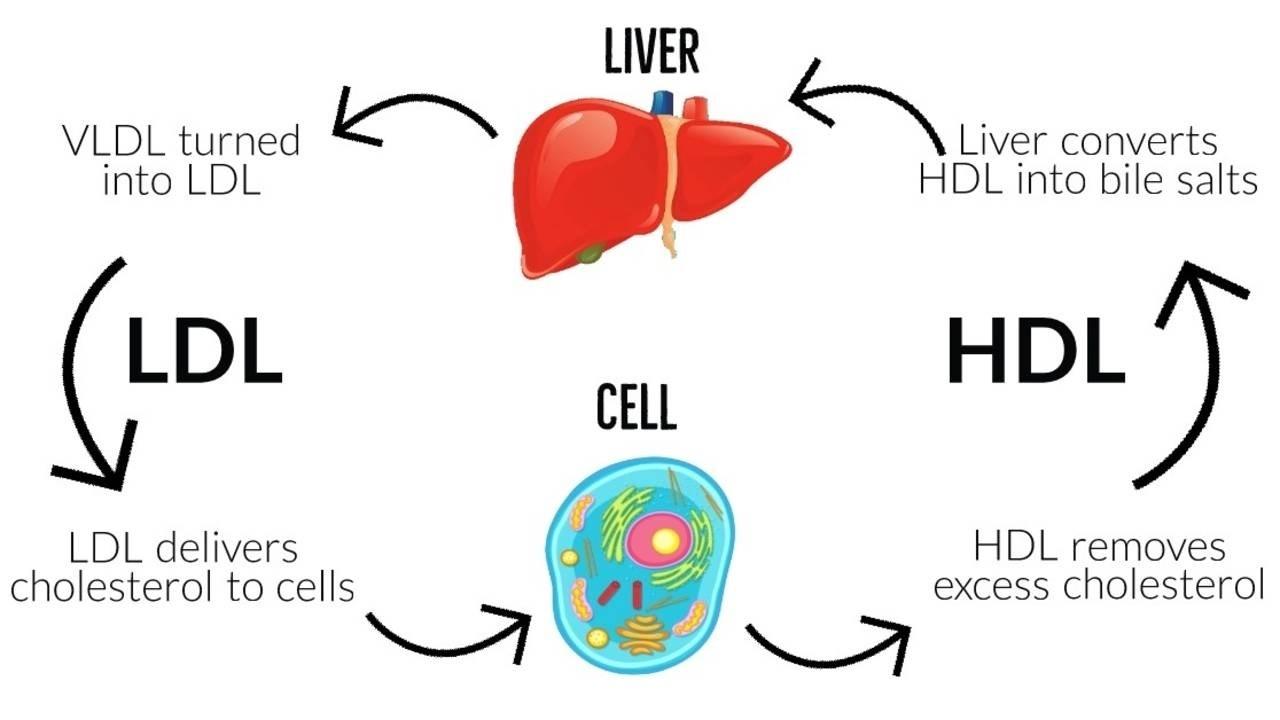Cholesterol & Triglycerides – What Are They?
Dec 17, 2018
All the cholesterol you need to function properly is manufactured in the liver, however it also comes from the foods we eat. Cholesterol and triglycerides are the most common lipids (or fats) in the bloodstream. In order to make their way through the bloodstream so they can be used by the body, protein wraps itself around the lipids, creating a lipoprotein. When the body transports too many lipoproteins (filled with triglycerides and cholesterol), the remainder are stored in the fat cells. Your body needs cholesterol to make hormones, vitamin D, cellular membranes, and a substance that helps you digest food called bile.
There are two types of cholesterol: low-density lipoproteins (LDL), known as bad cholesterol and high-density lipoproteins (HDL), also known as good cholesterol. LDL travels through your bloodstream delivering cholesterol to the cells that need it. If your body has too much LDL it can build up a substance known as plaque on the walls of your arteries. Overtime, plaque can narrow the arteries and reduce blood flow, which causes an increase in blood pressure. This is why LDL is called bad cholesterol. Furthermore, damage to vessel walls from things like high levels of sugar in the bloodstream can make it easier for LDL to form plaques.
Plaque buildup in your coronary arteries causes coronary artery disease and increases your risk of a heart attack. Whereas plaque buildup in arteries such as the carotid arteries in your neck can reduce blood flow to your brain and increases the risk of a stroke.
In addition to LDL, your liver also makes HDL. This form of cholesterol helps return excess cholesterol to your liver which removes it from your body. This is why HDL is known as good cholesterol.
Triglycerides on the other hand are used for energy, and also come from food and your liver. The foods providing the highest level of triglycerides are alcohol, fatty foods, refined carbohydrates, and simple sugar. High triglycerides can increase your risk of pancreatitis and other cardiovascular events like heart disease.
Other than meds, lifestyle changes can improve triglyceride levels. Changes include eating a diet low in sweets, refined carbohydrates and alcohol, getting regular exercise, managing your weight, and not smoking.
Below is a breakdown to show you ranges for cholesterol and triglycerides.
Cholesterol
Normal = < Total 200
Optimal HDL = > 60, < 50 for women or 40 for men is a risk for heart disease
Optimal LDL = < 100
Above optimal = 100 – 129
Borderline high = 130 – 159
High = 160 – 189
Very high = 190+
Triglycerides
Normal = less than 150
Borderline high = 151 to 199
High = 200 to 499
Very high = 500+
Get Notes from Nicole Weekly
Nicole will share her inspirational messages, meanderings, motivation, and self-care ideas that she often has while driving or mowing the lawn. Each "Note" is a relatable thought or anecdote from real life and often inspired by personal conversations or with her clients.

